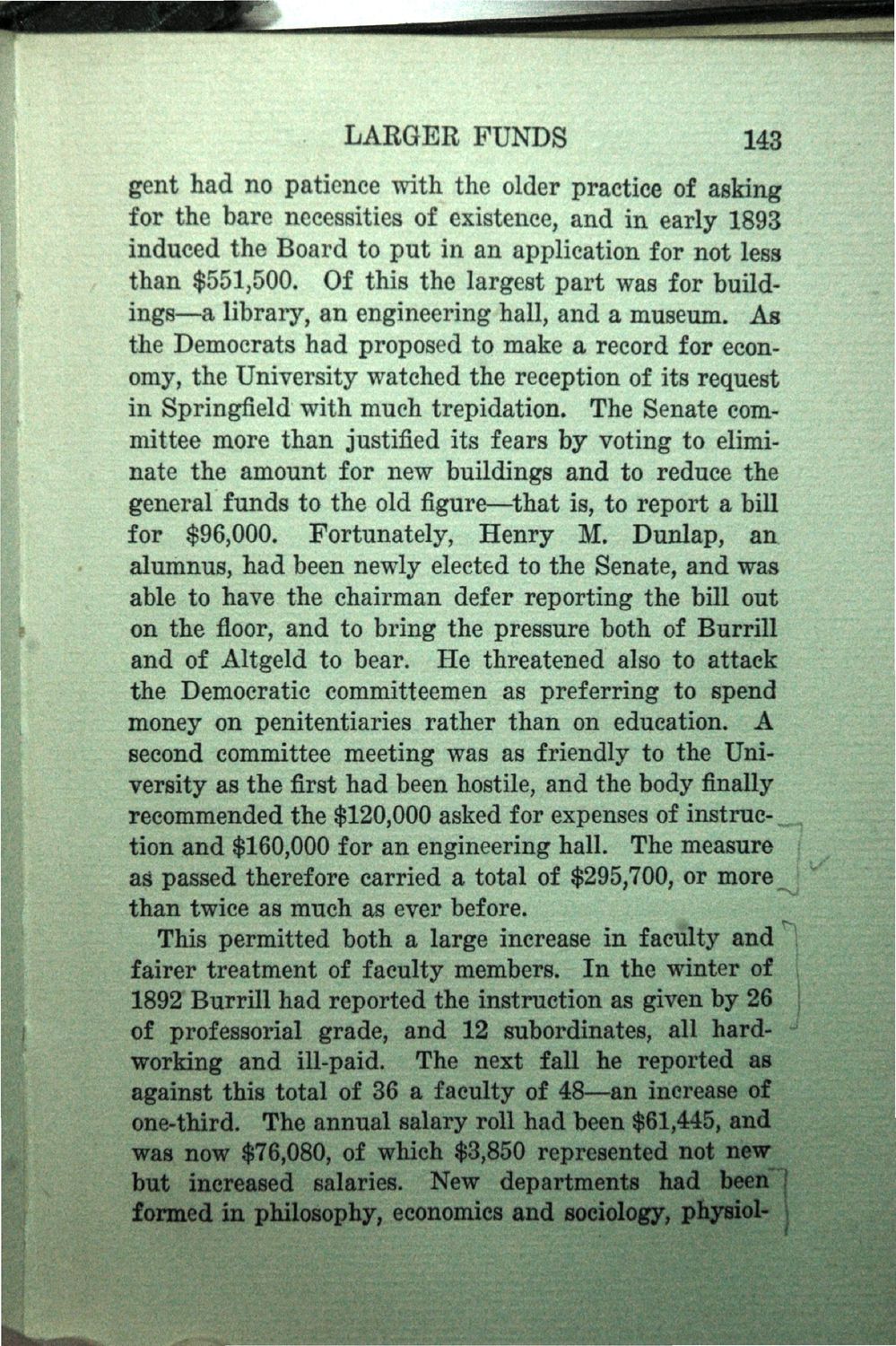| |
| |
Caption: Book - History of the University (Nevins)
This is a reduced-resolution page image for fast online browsing.

EXTRACTED TEXT FROM PAGE:
LARGER FUNDS 143 gent had no patience with the older practice of asking for the bare necessities of existence, and in early 1893 induced the Board to put in an application for not less than $551,500. Of this the largest part was for buildings—a library, an engineering hall, and a museum. As the Democrats had proposed to make a record for economy, the University watched the reception of its request in Springfield with much trepidation. The Senate committee more than justified its fears by voting to eliminate the amount for new buildings and to reduce the general funds to the old figure—that is, to report a bill for $96,000. Fortunately, Henry M. Dunlap, an alumnus, had been newly elected to the Senate, and was able to have the chairman defer reporting the bill out on the floor, and to bring the pressure both of Burrill and of Altgeld to bear. He threatened also to attack the Democratic committeemen as preferring to spend money on penitentiaries rather than on education. A second committee meeting was as friendly to the University as the first had been hostile, and the body finally recommended the $120,000 asked for expenses of instruc-_ tion and $160,000 for an engineering hall. The measure as passed therefore carried a total of $295,700, or more^ than twice as much as ever before. This permitted both a large increase in faculty and fairer treatment of faculty membersigln the winter of 1892 Burrill had reported the instruction as given by 26 of professorial grade, and 12 subordinates, all hardworking and ill-paid. The next fall he reported as against this total of 36 a faculty of 48—an increase of one-third. The annual salary roll had been $61,445,||ttd was now $76,080, of which $3,850 represented n o t ^ i g but increased salaries. New departments had beeife formed in philosophy, economics and sociology, physiol-
| |